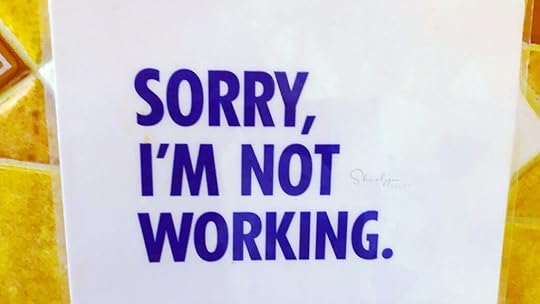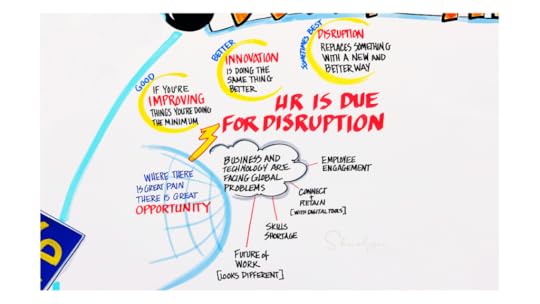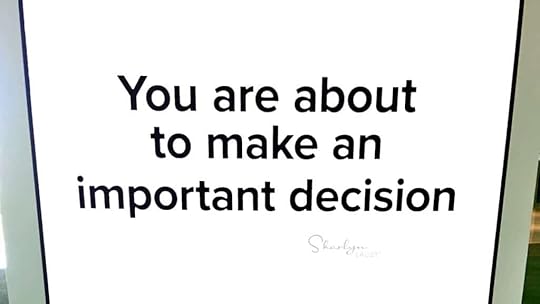Sharlyn J. Lauby's Blog, page 10
April 1, 2025
Labor Law Posters: Strategies for Staying Compliant

Estimated reading time: 7 minutes
(Editor’s Note: Today’s article is brought to you by our friends at Poster Guard® Poster Compliance Service, a division of HRdirect and the leading labor law poster service that gets your business up to date with all required federal, state, and local labor law postings, and then keeps it that way — for an entire year. Enjoy the article!)
We’re all reading the same news stories saying organizations are asking telling demanding that employees return to the office. An important consequence of that is making sure that the office is ready for them. And by ready, I mean compliant when it comes to labor law posters.
In addition to getting the office ready for onsite work, it’s worth noting that there are still employees who are actively seeking remote work. According to Robert Half’s Demand for Skilled Talent report, 26% of job seekers are looking for a fully remote job (48% would like to find a hybrid role). So, organizations need to have a strategy for staying compliant with labor law posters – whether that’s onsite, hybrid, or remote.
While labor law postings might sound easy from an administration standpoint, they really are complex. As a reminder, there are six mandatory federal notices that most employers are required to post include:
In addition to the federal postings, there are state, county, and city posters. Some posters are required for applicants and others for employees. Oh, and let’s not forget about posters and/or handouts for the remaining remote employees. Keeping current on labor law posters can be a full-time responsibility.
That’s why HR Bartender is delighted to have a long-standing partnership with Poster Guard® Compliance Protection, a division of HRdirect. So, I reached out to Lillian Chavez, Esq., managing legal research attorney at HRdirect, to see if she would share her compliance knowledge with us. Thankfully, she said yes.
Please remember that Lillian’s comments should not be construed as legal advice or as pertaining to any specific factual situations. If you have specific detailed questions, they should be addressed directly with your friendly neighborhood labor attorney.
Lillian, thanks for being here. Some organizations might believe that labor law posters are for big organizations. Is there a minimum number of employees before an organization needs to display labor law posters? If so, what is it?

[Chavez] Employers must comply with federal, state, city, and county posting requirements. On the federal level, most of the postings (4 out of 6) apply even if the employer only has one employee. On the state and local levels, the same general rule applies. The majority of labor law postings apply to all employers regardless of employee size. There are some exceptions, such as the federal Equal Employment Opportunity (EEOC) posting which applies to employers with 15 or more employees, and the Family and Medical Leave Act (FMLA) poster for those with 50 or more employees companywide.
The reason I wanted to chat today is because many organizations are still trying to figure out the onsite / hybrid / remote workforce puzzle. So, I have a two-part question specifically regarding remote employees. For part one, do remote employees need labor law posters? Can the company provide a handout instead of a poster?
[Chavez] Employers are required to provide mandatory workplace postings to all employees, regardless of where they work. That includes remote workers and home-based employees.
According to the U.S. Department of Labor (USDOL), if an employee does not come into the office where the physical posters are displayed at least 3-4 times per month, the postings should be provided in an alternate format, such as electronically (for employees with email/internet access).
Employee ‘handouts’ are completely different, and typically refer to legal notices employers must personally distribute to employees at various points in the employment relationship, such as:
Upon hire, On employee anniversaries, When there are pay status changes, When an employee becomes pregnant, When an employee becomes injured or requests a leave of absence, and Upon termination.Each state and locality has different requirements. For the most part, these ‘handout’ requirements are separate and apart from workplace posting requirements. There are a few overlapping notices, but as a general rule the handout notices are separate and must be distributed in addition to the workplace posters. Each handout requirement is unique when it comes to the distribution method, but in most cases electronic delivery is acceptable.
The second question about remote employees and labor law handouts is does the notice need to be for the state the employee lives in or the state that the organization is based in?
[Chavez] Unfortunately, it’s not always clear which state laws apply in this instance. Most basic employment rights — such as minimum wage, overtime, and safety issues — are governed by the laws where the employee performs the work. However, depending on how your company is structured, your out-of-state employees may be covered by both states’ laws. Your notices (handouts and posters) should correspond with the actual employment laws applicable to each employee. Because it depends on so many factors, we recommend you consult with an attorney if you are unsure which employment laws apply to your employees, and it is always safe in the meantime to provide the notices for both states.
I know Poster Guard offers a labor law poster service. Does the labor law service include handouts for remote employees?
One option provides a custom link employers can post on their internal websites to give employees 24/7 access to the poster images, and one provides the digital posters directly to each employee by email, with full tracking of their acknowledgments for recordkeeping.

For the additional ‘handout’ notices that employers must personally distribute at various stages of the employment relationship, Poster Guard offers a comprehensive solution covering every handout requirement at the federal, state, and local levels. The Mandatory Employee Handout Service provides immediate access to a database of all required handout notices, includes attorney-written instructions for each handout (including permissible distribution methods), sends alerts whenever there are new or updated requirements, and allows for unlimited internal use of the files for the annual membership term.
Last question. And this one is focused on the future. As organizations continue to grow, they will want to make sure new employees get the right notices. What can the organization do to make sure they remain in compliance?
[Chavez] The Mandatory Employee Handout Service includes all handout notifications that are required for new hires under federal, state, city, and county employment laws. Poster Guard’s legal team keeps the notices up-to-date to ensure the right notices are available at the right time for ongoing compliance as you onboard new employees. With more than 100 mandatory handout updates and more than 200 mandatory poster updates in 2024 and 40+ so far in 2025, it’s critical to rely upon an experienced provider with a dedicated legal team keeping on top of these rapidly evolving legal requirements.
I want to extend a huge thanks to Lillian for sharing her knowledge with us. If you’re looking for additional information about managing employment law posters, check out the Poster Guard blog for regular updates.
In addition to placing your company at risk of legal fines and penalties, a real breakdown of trust can happen if an employee discovers that their employer isn’t maintaining compliance. An employee might ask themselves, “If the company didn’t tell me about this, what else haven’t they told me?” Having a process in place for employees to receive the required labor law notices tells employees that the organization cares about doing the right thing.
The post Labor Law Posters: Strategies for Staying Compliant appeared first on hr bartender.
March 30, 2025
6 Keys for Effective Communication

Estimated reading time: 3 minutes
Working in teams is a necessary part of life.
If you work in an organization, you probably work with an onsite team or a remote team. If you’re a consultant, you might be part of a project team. It’s possible in your personal life you’re part of a volunteer team. Working in teams happens all the time. And an essential activity with teams is communication.
Teams that learn how to consistently communicate well can perform at a high level. And teams that don’t … well, they will struggle. I believe the keyword here is consistently. Even high performing teams can have communication misunderstandings. When that happens, team leaders will need to help the group. Even if the team leader doesn’t get directly involved, they might coach and support the team as they work through the disagreement.
Here are six keys for effective communication. Keep them in mind when differences occur.
Establish trust. If a team is having a misunderstanding, it’s important to maintain trust between team members. A lack of trust could have an impact in future communications. You know, “I don’t trust them so why should I believe anything they say”. Building trust is hard and this might have to be addressed first before dealing with the actual misunderstanding.
Provide relevant information. When trying to work through a misunderstanding, there are often two different things you’re dealing with. First, whatever the misunderstanding is about. Let’s say it’s about information presented during a meeting. Providing good data / information can help to bring clarity. The second thing is why the misunderstanding happened. Was it the way the information was presented? Did someone feel disrespected? Both issues must be addressed.
Listen with empathy. Sometimes the reason for a team misunderstanding is hurt feelings. Depending on who is involved in the misunderstanding, the team members involved should listen with empathy in communication with colleagues. For instance, if a team member felt embarrassed by something said during a meeting, chances are the other team members would not want to feel the same way. Therefore, this should be discussed.
Acknowledge the other person’s point of view. A step in building trust and moving past misunderstandings is acknowledging the other person and their feelings. Simply dismissing the other person’s views doesn’t show value for the person. I know that we’re in a very social and politically charged environment right now. It’s important to remember that we can validate a person’s emotions without agreeing with them or sharing their beliefs.
Provide feedback. There could be times during a misunderstanding when one person has to provide feedback to someone. Maybe there was a public confrontation during a meeting, and it needs to be addressed along with some feedback on how to handle such situations in the future. Remember that feedback should be specific, well-timed, and respectful of the individuals involved.
Demonstrate understanding. Paraphrase is a communication skill that allows others to know you understand the message. It can also be helpful in reducing future misunderstandings. Paraphrase is not the same as what I call “parroting”, which is just repeating what the other person said. Paraphrase is when you repeat the message using your own words. Use paraphrase to confirm that you understand what’s being said.
Whether you’re a team member dealing with a disagreement or a team leader coaching someone who is involved in a misunderstanding, these six keys to effective communication can provide reminders about how to work through those conversations and move forward.
Image captured by Sharlyn Lauby while exploring the streets of New York, NY
The post 6 Keys for Effective Communication appeared first on hr bartender.
March 27, 2025
Bookmark This! The Employee Offboarding Edition

Estimated reading time: 3 minutes
HR professionals often talk about the importance of onboarding employees. And it’s true. Onboarding is an important activity that sets new hires up for success.
One of the great things about having a structured onboarding program is that it can provide the basis for developing an offboarding program. There are so many things that organizations and employees need to do when someone is leaving … and we’re not just talking about wrapping up projects and finding their replacement.
Employee offboarding also includes conversations about COBRA coverage, 401(k) rollovers, and final paychecks. We need to discuss exit interviews and possibly talk about returning computer equipment, keys, and ID badges.
Organizations can use their onboarding guides as a reminder of those things that need to be discussed and collected. This ensures the exiting employee gets all the information they need. And that the organization gets all the things theyneed too. If you’re looking for some information on how to review and formalize your offboarding process, here are a couple of articles to get you started.
Offboarding: 5 Steps for Building a Policy
There’s no question that employee onboarding is an important activity. Employee offboarding is equally important. Employees will always remember the way they were treated when they were leaving the company. In fact, that last memory could be the one they share with potential applicants, current employees, and future customers. It makes good business sense to allow employees to leave the organization with respect.
The 4 Phases of an Offboarding Program
Offboarding is an important step in the employee life cycle. Organizations can’t afford to ignore it. In a competitive labor market, we have to consider that exiting employees might be potential rehires. And that means we need to think about exiting employees as future candidates. And the way employees are treated as they leave the organization speaks volumes about the company brand.
We often say that people remember first impressions. Employees remember how they were greeted on their first day of work. Well, people also remember the way they leave an organization. It takes a little thought and planning but a good offboarding process is well worth the time and resources spent.
Organizations really can’t afford to alienate employees as they’re leaving. Former employees might want to return. Or the company might want them to return. They can refer other employees and customers. Creating an employee offboarding process that is informative and respectful is the key to success.
Image captured by Sharlyn Lauby while exploring the streets of Gainesville, FL
The post Bookmark This! The Employee Offboarding Edition appeared first on hr bartender.
March 25, 2025
How to Successfully Outsource When You Need To

Estimated reading time: 3 minutes
I’ve talked in the past about the concept of “buy, build, borrow”. It’s the idea that when organizations are looking for talent, they need to consider whether they want to buy (hire from the outside), build (develop current employees), or borrow (outsourcing work to freelancers or contractors). Each strategy has its advantages and challenges.
Today, I want to focus on the last one – borrow. There are many reasons that an organization might want to consider a borrow (aka outsourcing) strategy.
They don’t want to add to their existing headcount. I’ve worked for several companies that didn’t want to grow their staffing levels. They decided to partner with consultants or contractors that they could use when they needed them. An example might be training. Instead of having a large learning and development department, the organization might opt for a smaller team and use consultants for certain programs.
There are external resources that can do the work better, cheaper, and/or faster. Some companies have developed an expertise that allows them to do the work better than doing it in-house. Or cheaper than doing it internally. Maybe even faster that it can be done inside the company. It’s not that the company can’t do it … it’s that the company’s resources are better spent elsewhere. For instance, I’m hearing about organizations outsourcing tasks like updating policies and the employee handbook. Can the HR team do it? Sure. Is that how you want them spending their time? Probably not. Maybe they should focus on those open job requisitions and workplace investigations instead.
You get the point. There are many business reasons for organizations to use freelancers, contractors, and consultants as part of their operation. The key to a successful borrow strategy is having a good outsourcing process. Here are some things to keep in mind.
Identify the business need. Before immediately deciding to outsource something, the organization should look at what they’re trying to accomplish. Understanding the business goal will make the next steps easier. And this is going to be important in evaluating the consultant’s performance later. Determine the must-haves and nice-to-haves. List the must-have knowledge, skills, and abilities (KSAs)expected in a freelancer. Yes, it’s great when we get some of those nice-to-haves … but don’t let a contractor’s flashy presentation distract from whether they have proven capabilities. Assess potential partners. Always a good idea to talk with several potential partners and then decide what’s best for the organization. One thing the organization might want to consider is whether the consultant has the capacity to grow with the organization.Select the partner and negotiate the agreement. I know this goes without saying, but make sure the organization understands the contract they’re signing including how to cancel the agreement. Manage the scope of work and regularly evaluate. Hiring a outside partner does not mean the organization doesn’t need to manage the work. The organization should be prepared to do their part. In addition, the company should regularly evaluate the consultant’s performance against goals. FYI – the consultant is doing the same – they are evaluating if the company is a good piece of business.Using the services of a contractor or consultant doesn’t have to be agonizing. Using a good process and having a well-thought-out agreement can be the start of a successful long-term partnership.
Image captured by Sharlyn Lauby while exploring the streets of Orlando, FL
The post How to Successfully Outsource When You Need To appeared first on hr bartender.
March 23, 2025
5 Reasons Organizations Need to Do Succession Planning

Estimated reading time: 4 minutes
Organizations know what succession planning is. It’s the process of identifying and developing employees who can replace key roles within the organization. And organizations are well aware of the value that succession planning brings because it’s absolutely essential to think about the “what if’s” associated with a key role being open.
But, for some reason, many organizations just don’t do it.
According to the Pew Research Center, approximately 10,000 people each day become eligible for retirement. This statistic is expected to continue for the next decade. It doesn’t mean that everyone is going to leave the day they can collect retirement benefits, but it does mean organizations need to be aware of the possibilities within their workforce.
I know I don’t have to remind everyone, but let me do it anyway. At any given moment in time, organizations could be faced with a job opening. We have a tendency to only think of succession planning in the context of senior level positions, but really any job opening could be worth considering for succession planning. Here are five reasons that organizations might want to revisit succession planning:
It’s taking longer to find qualified candidates. According to a report from the Society for Human Resource Management (SHRM), the average time to fill a job opening was 44 days in 2024. Using that number, organizations need to decide if they can live with a job opening for roughly six weeks plus the productivity curve (when they finally do hire someone). Those numbers can decrease significantly when companies have a succession plan in place.It’s becoming harder to find skilled candidates. In the same SHRM report, 3 of 4 organizations have experienced difficulty in recruiting for regular full-time positions. Those challenges can impact business performance, customer service, and company growth. When not having the right talent at the right time hits the bottom-line, it’s time to consider succession planning.Training employees could improve engagement and retention. Employees want to know that they have a future with the organization. One way to demonstrate that is with training and development opportunities. It’s not mandatory to tell employees they’re a part of the succession plan. Providing training in problem-solving, conflict resolution, collaboration, decision-making, etc. is a huge investment into both current and future talent.Training is cheaper than recruiting. This isn’t meant to be cold-hearted but, the longer it takes to hire a qualified employee, the more expensive it is. The goal of succession planning is to have talent ready at the time the opening occurs. Even if an employee isn’t 100% ready to take on the new role, being 85% ready can better (i.e., less expensive) than an external hire.Succession planning isn’t as hard as it might appear. One possible reason that organizations don’t do succession planning is because the process is perceived to be administratively burdensome. The good news is, today’s technology can assist with succession planning. Managers and employees can set career development goals and conduct regular one-on-one meetings to monitor progress.Organizations no longer have the luxury of hiring everyone from the outside. At some point, they need to develop talent from within. That’s succession planning.
Admittedly, succession planning takes preparation and resources. Don’t wait until it becomes a talent crisis. The best time to think about succession planning is when the company can put some training programs in place. Budget resources for talent development and use them. It might be tempting to leave money on the table, but that could only hurt the company in the long-run.
If you haven’t thought about succession planning lately, it might be a good time to revisit it. Recruiting continues to be a challenge and talent is a key business differentiator.
Image captured by Sharlyn Lauby while exploring the streets of Nashville, TN
The post 5 Reasons Organizations Need to Do Succession Planning appeared first on hr bartender.
March 20, 2025
Remember Names Using the Rule of Three
Estimated reading time: 3 minutes
When I worked in the hospitality industry, we encouraged employees to use the guest’s name. It makes the interaction more personal and friendly … and hopefully that leads to a better experience for the guest. But remembering names can be hard. So, we suggested a tip called the “rule of three”. When interacting with a guest, try to find three opportunities to use their name.
I was reminded of the rule of three while reading an article from The Wall Street Journal titled “Is Repeating Someone’s Name Charming or Creepy?” I totally get the point of the article. Saying a person’s name once or maybe twice could be charming. Saying a person’s name four or five times could be creepy. Unfortunately, the article didn’t offer an exact number of times you’re allowed to say someone’s name before you move from charming to creepy.
But for me, the article reinforced the positive value of using a person’s name correctly. Not only using it the right number of times but pronouncing a person’s name correctly. It’s a sign of respect.
When you’re meeting someone for the first time, consider how you could apply a concept like the rule of three to your interaction.
First, when they introduce themselves, use their name in your greeting. “Nice to meet you, INSERT NAME HERE.” If you’re having a conversation with them, is it possible to use their name in a question. “So, tell me, INSERT NAME HERE, what brings you to this event?” If it’s a short interaction, it might not be possible. Finally, as the conversation is wrapping up, you can say, “Pleasure to meet you INSERT NAME HERE.”I recently went to a conference on artificial intelligence and met someone who saw me the next day and said my name. It was nice. And that’s the point. It’s nice when people remember you and your name. It’s nice when they say your name correctly.
Apply this conversation to your workplace. How many managers take the time to learn how to properly pronounce employee’s names? Or do they come up with some sort of nickname to make their life easier? You might think this doesn’t happen but trust me, it does. Granted, if an employee offers up a nickname, then great. and does nothing to encourage a positive working relationship.
I wanted to share The Wall Street Journal article and talk about names because organizations hire people regularly … and that means learning new names. Managers should be coaching and supporting employees … which means using their names. Companies conduct employee training and during sessions should be able to address employees by name.
Find a way to remember the names of your employees and customers. It’s good for everyone.
Image captured by Sharlyn Lauby while exploring the streets of St. Augustine, FL
The post appeared first on hr bartender.
March 18, 2025
Mandatory Employee Handouts: 4 Things Every Organization Should Know

Estimated reading time: 4 minutes
(Editor’s Note: Today’s article is brought to you by our friends at Poster Guard® Poster Compliance Service from HRdirect , the leading labor law poster service that gets your business up to date with all the required federal, state, and local labor law postings, and then keeps it that way – for an entire year. Enjoy the article!)
Organizations are required to distribute two different types of employee notifications: labor law posters and employee handouts. It occurred to me that because there are two types of mandatory employee communications, it’s possible that organizations might overlook employee handouts thinking they’ve got it covered with labor law posters. So, I wanted to share some additional information about mandatory employee handouts.
Mandatory handouts are legal notifications, typically issued by government agencies at a federal, state, and local level. Common examples include sexual harassment in the workplace, Workers’ Compensation, and the Family and Medical Leave (FMLA). In addition, government agencies might require notifications in multiple languages.These employee handouts are in addition to any labor law poster requirements for your workplace. This is what makes mandatory employee notifications so challenging. Some laws require only postings, some require postings and handouts, and others only handouts. It’s important to know the requirements as they pertain to your organization.Many required handouts are distributed to employees at the time of hire, usually during orientation. However, some handouts are “event driven”, meaning that they must be distributed at the time of the event. For instance, Family and Medical Leave Act notifications should be provided to the employee when they are requesting leave.In addition to notifying new employees, current employees need to be notified as well. When new notifications are required, organizations should start giving new hires those new required notifications, BUT we can’t forget about current employees. They need to be notified about the new or changed requirements as well. Keep in mind that some government agencies will require that notifications are acknowledged (i.e. signed) by the employee.The good news is that some government agencies do offer free downloads of these mandatory employee handouts. In those situations, human resources departments can simply download the document.
The not-so-good news is that there’s no single government entity that will tell you everything you’re required to do. According to Lillian Chavez, Esquire, managing legal research attorney at ComplyRight, there are “across the nation, more than 400 different federal and state notices that employers must distribute based on different triggering events. In a state like California, there can be up to 32 employee notices issued by up to five different agencies for compliance”.
As a human resources professional, let me add a couple of things to Lillian’s comment. First, more often than not agencies don’t notify employers of changes. So, organizations not only need to know where to look for the legal requirements, they have to regularly go back and double check to ensure they maintain compliance.
Second, there are instances where government agencies do not offer templates or free downloads. Organizations are then responsible for creating the handout on their own. I don’t have to tell you what that means. Human resources is responsible for everything that comes with designing the new form – researching the legal guidelines, creating the document, getting legal approvals, communicating the change, etc. Oh, and we all know this (but I’ll say it anyway) that, if an organization is caught being out of compliance, they are subject to fines, penalties, and legal exposure.
But let’s get back to some more good news. Organizations don’t have do this alone. Our friends at Poster Guard have a Mandatory Employee Handout Service. It was developed by their legal team to help organizations comply with all these handout requirements. Here’s how the service works:
Organizations are provided with electronic access to current federal, state, county, and city handouts, so they can print and deliver, or email them to employees. Poster Guard takes care of monitoring and updating, so organizations will always have the most current information to share with employees. AND …Electronic access includes some templates that organizations can use to create their own.Compliance isn’t always the fun part of being a human resources professional. But it’s essential to the organization and not just from the standpoint of avoiding fines and penalties.
Telling employees their legal rights is simply the right thing to do. The last thing organizations want is to develop a reputation for being an employer that doesn’t operate in good faith. We don’t do that with our customers and we don’t want to do it with employees. It will impact the company’s ability to hire, engage, and retain the best employees, which ultimately impacts the bottom-line.
The post Mandatory Employee Handouts: 4 Things Every Organization Should Know appeared first on hr bartender.
March 16, 2025
8 Ways Groups Make Decisions

Estimated reading time: 4 minutes
I recently published an article on how to resolve team conflicts. While I mentioned in the article an example of resource allocation being a reason for conflict, there are other reasons that teams experience conflict. Some of them have to do with the way decisions are made.
I’ve seen on many occasions employees who are upset not because of the decision but how the decision was made. So, I thought it might be helpful to talk about the different ways teams make decisions. By the way, I didn’t just make up this terminology. It comes from a variety of sources, I just wanted to bring it into a single list for easy reference.
PLOP: This happens when the group is discussing something and someone says, “Here’s what we should do … and plops down a solution.” Depending on who does the plopping, it could be ignored. Or it could be immediately accepted without discussion. Either way, the solution doesn’t get the proper amount of consideration.
KILL: This happens when someone proposes a solution, and it’s immediately rejected. I see this happen a lot during brainstorming sessions. Teams start throwing out ideas and someone starts picking them apart. Eventually, the ideas stop coming because people get tired of having their ideas killed before they are even considered.
SELF AUTHORIZED: A self-authorized decision is one where an employee does something because no one told them “no”. This type of decision often happens when employees are unable to get answers from their team leader. They might send an email that says, “If you don’t respond by INSERT DATE / TIME, then I’ll assume you’re cool with what I’m planning to do.”
HANDCLASP: A handclasp decision happens when someone on the team makes a suggestion, and one person agrees with it … but no one else does. Depending on who that one person was who agreed, the employee proceeds. I see this happen when an employee suggests something, the team leader likes the idea … but then the team leader learns more information. Meanwhile the employee is moving forward with their suggestion.
MINORITY: We all know this one. It’s when a small group make a decision for the larger group. An example might be when a group of managers make a decision for the entire company without consulting anyone else. Or when HR drafts a company policy without getting input from key stakeholders.
MAJORITY: A majority decision is when 50% + 1 make a decision. Organizations make majority decisions all the time. On one hand, it usually means the majority agree with the decision. On the other hand, it might mean that 49% don’t – which is a lot of people. And who is in the majority and minority might matter. For example, let’s say the company makes a decision that the majority of employees agree with, but the entire sales team is in the minority, and they threaten to quit. That presents a problem.
UNANIMOUS: Unanimous decisions are very rare, but they do happen. So, I don’t want to exclude them from the list.
CONSENSUS: The last method of decision making is consensus. Building consensus is not the same as compromise. With compromise, people give up things to come to some sort of agreement. We might see compromise with minority or majority decision making. Consensus building is about working together to create a decision that everyone can live with. And that really is the key to consensus building. Everyone doesn’t have to love the idea or even like it. But everyone should be able to say that they can live with it. Otherwise, you’re really just using minority or majority decision making and calling it consensus building.
Each of these decision-making processes have a place in team dynamics. I could see during an emergency, a plop being absolutely the right thing to do. But ultimately, groups might want to refine their ability to reach consensus. This can help groups make better decisions with everyone being involved in the process.
Image captured by Sharlyn Lauby after speaking at the SHRM Annual Conference in Las Vegas, NV
The post 8 Ways Groups Make Decisions appeared first on hr bartender.
March 13, 2025
Bookmark This! The Goal Setting Edition

Estimated reading time: 3 minutes
Organizations and individuals are focused on performance. This shouldn’t come as a surprise. And the good news is … setting goals can help improve performance. In a recent McKinsey article, they cite a survey indicating that 72% of employees feel goal setting is a strong motivator for performance. So, setting goals helps employees and the organization perform at higher levels. It’s a real win-win!
But honestly, goal setting can be a challenge. First, you have to decide what you want to set goals for and then you have to determine what you’re trying to achieve. For example, I might set a goal related to artificial intelligence (AI). Then I need to decide which AI platform, and what exactly is my desired result? Just to get a subscription? Or ask AI a question every day? You see the point.
Setting goals should be a focused process. So, I wanted to share some articles today that can help with goal setting.
The Difference Between Knowledge, Skills and Abilities
Recruiters look for knowledge, skills, and abilities (KSAs) during the hiring process. As we talk more about the skills gap, it will be important to understand the difference because the way we obtain knowledge, skills, and abilities can vary. And if we’re an organization trying to figure out how to solve the skills gap that exists within our workforce, then we have to link the right solutions.
Job Seekers Should Focus on Skills Development
Right now, job seekers will want to demonstrate that they are able to use emerging technologies like artificial intelligence. They will want to be able to communicate well to individuals and groups. And it’s essential that the information they communicate is accurate and timely. In today’s job market, I don’t know that it’s an unreasonable request. Job seekers will want to think about how they can convince a prospective employer that they have those skills.
How to Improve Performance Results at Work
Doing our best work isn’t always easy. Maintaining high performance isn’t easy either. But there are a few things we can do to maintain high performance and achieve our professional goals.
The Difference Between Goals, Objectives and Outcomes
Goals become more relevant if the organization is focused on outcomes first. We spend a lot of time talking with employees about results. And that’s good. But do we spend time talking with employees about outcomes? Do employees know how their goals not only align with the organization’s goals BUT also with business outcomes? Something to consider.
7 Steps for Getting Started with OKRs
OKRs are objectives and key results. OKRs can help organizations identify the goals they want to accomplish and keep them focused on results. Having a consistent process for goal setting and measurement is the first step. Implementing an objectives and key results methodology does take time, so having a roadmap for getting started will help.
We can use KSAs to help us decide what we want in terms of goal setting. We might want to focus on a learning a knowledge topic or practicing a skill that will help us find a new opportunity. Then use the principles behind OKRs to develop goals that are measurable and specific.
I’m going to end today’s article the same way I started it. Organizations and individuals are focused on performance. This isn’t anything new. Learning how to create good goals and work toward accomplishing those goals will be essential for business success.
Image captured by Sharlyn Lauby while exploring the streets of New Orleans, LA
The post Bookmark This! The Goal Setting Edition appeared first on hr bartender.
March 11, 2025
Selecting Benefits that Support the Lifecycle of Your Employees

Estimated reading time: 5 minutes
(Editor’s Note: Today’s article is brought to you by our friends at Selerix , a leading provider of benefits administration, healthcare compliance and communications solutions. Check out their latest article on the Forbes Business Council site about personalizing benefits for a four-generation workplace . Enjoy!)
Employee benefits are a significant portion of an employee’s total compensation. According to the Bureau of Labor Statistics, the percentage is around 30%. So, we know that it’s important for organizations to get benefits right.
Companies and employees want the same thing: They want the money spent on employee benefits to get maximum results. Meaning employees want the money spent on things they want and need. The organization also wants the monies spent to deliver results in terms of attracting, engaging, and retaining talent. This is true regardless of whether or not the benefit is mandated by law.
A good way to ensure that the company’s benefit spend is accomplishing its goals is to think about benefits throughout the employee lifecycle. Here are five key phases of the employee lifecycle and some things to consider when selecting benefits.
Recruitment. Organizations want to understand what their competitive set is offering in terms of benefits. It could also be helpful to utilize exit interviews to find out what employees who are leaving the organization think of the company’s benefit package. This can help the organization understand 1) what their benefit strategy should be in the labor market (i.e., lead or lag) and 2) what specific benefits they want to offer. For instance, if everyone in the organization’s competitive set offers a Flexible Spending Account (FSA), then the company might want to do the same.
Development. Once employees are hired, they need training for the jobs they have and development for the jobs of the future. I’d like to believe that organizations are prepared to train employees but what about other activities related to learning? For example, will the organization support employees attending certificate programs and getting certifications? Or covering membership dues to professional associations? Maybe student loan assistance? Organizations do not have to offer every learning experience. They do need to think about the different types of learning experiences that are available and how they can support them to remain competitive.
Performance. Supporting learning leads to better performance. Both organizations and employees want this. With high performance, organizations have more employee benefit decisions to make. Some of the decisions might be considered less of a “benefit” and more of an operational necessity, but they do need to be discussed. Like how managers will receive training to coach employees for high performance? And how will human resources departments help employees at every level of the organization achieve their career goals? For instance, Zappos has full-time life coaches to help employees achieve their career goals. Again, companies don’t have to do everything themselves, but they do need to have a plan for supporting an employee’s career goals.

Mobility / Transition. As employees become more skilled, they will want new opportunities. This is a good thing for the organization. But companies need to think about what types of benefits they would like to offer for employees who want to get promoted / transfer / make a lateral move. Employees might be reluctant to take on additional responsibilities if they don’t include certain benefits like flexible scheduling, hybrid work, and/or relocation assistance. On the flip side, the organization might have high performing employees who are ready to do less. They might not be ready to retire but could possibly work part time or as a contractor. Organizations can consider developing a phased retirement strategy along with benefits that align with the employee’s transition. This is where mandatory benefits like COBRA are especially important.
Retention. Ultimately having a well-thought-out benefits offering allows the organization to retain employees. Because the organization is giving employees what they want. And what employees want is to work for a company that values them. Great examples of benefits that tell employees they’re important include paid time off (PTO) and wellbeing programs (of course, in addition to healthcare). Also, don’t forget financial education programs. Finally, employees want to work for an organization they can be proud of. Benefits that demonstrate supporting values include corporate social responsibility initiatives like supporting employee volunteerism.
If you want to learn more about developing an employee benefits strategy, including how to keep employees informed about their benefits, join me and the Selerix team for a webinar on Thursday, April 3rd, 2025 at 2p Eastern. The topic is “Bringing Us Together Through Innovative Benefits”. If you already have a commitment that day, no worries. Sign up and get the recording.
Organizations want to offer benefits that not only attract candidates to their job openings but keep employees with the organization. Thinking about employees’ wants and needs throughout their lifecycle can offer insights about what will retain workers and keep employees engaged and productive.
The post Selecting Benefits that Support the Lifecycle of Your Employees appeared first on hr bartender.
Sharlyn J. Lauby's Blog
- Sharlyn J. Lauby's profile
- 10 followers



